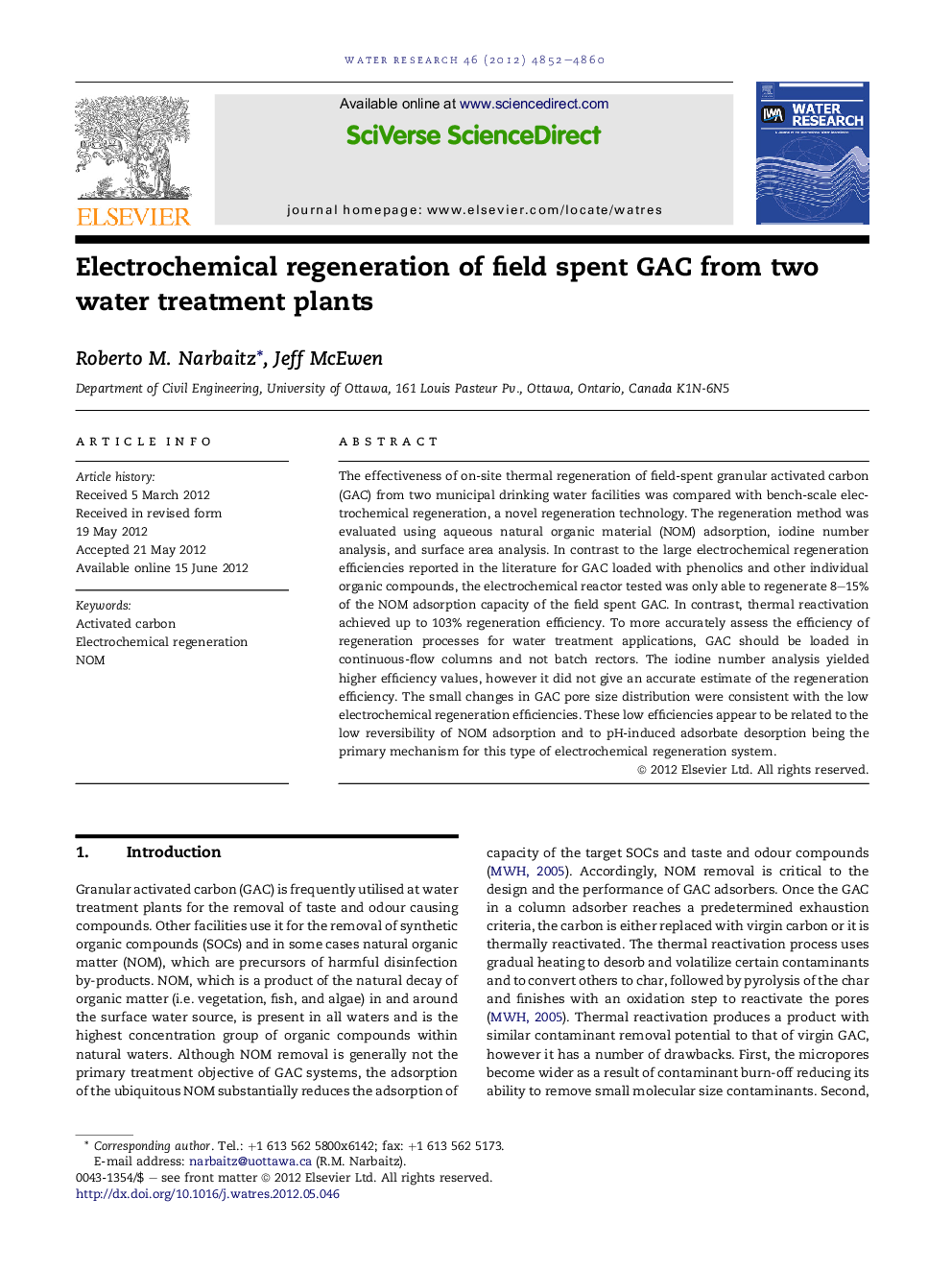| Article ID | Journal | Published Year | Pages | File Type |
|---|---|---|---|---|
| 4483005 | Water Research | 2012 | 9 Pages |
The effectiveness of on-site thermal regeneration of field-spent granular activated carbon (GAC) from two municipal drinking water facilities was compared with bench-scale electrochemical regeneration, a novel regeneration technology. The regeneration method was evaluated using aqueous natural organic material (NOM) adsorption, iodine number analysis, and surface area analysis. In contrast to the large electrochemical regeneration efficiencies reported in the literature for GAC loaded with phenolics and other individual organic compounds, the electrochemical reactor tested was only able to regenerate 8–15% of the NOM adsorption capacity of the field spent GAC. In contrast, thermal reactivation achieved up to 103% regeneration efficiency. To more accurately assess the efficiency of regeneration processes for water treatment applications, GAC should be loaded in continuous-flow columns and not batch rectors. The iodine number analysis yielded higher efficiency values, however it did not give an accurate estimate of the regeneration efficiency. The small changes in GAC pore size distribution were consistent with the low electrochemical regeneration efficiencies. These low efficiencies appear to be related to the low reversibility of NOM adsorption and to pH-induced adsorbate desorption being the primary mechanism for this type of electrochemical regeneration system.
► The electrochemical reactor tested was ineffective in the generation of field-loaded GAC. ► The low regeneration efficiencies were attributed to the limited NOM desorption. ► Regeneration efficiency of water treatment plant GAC should be evaluated via column tests. ► Iodine number was not a good indicator of the electrochemical regeneration efficiency. ► The pore size distributions were consistent with the regeneration efficiencies.
